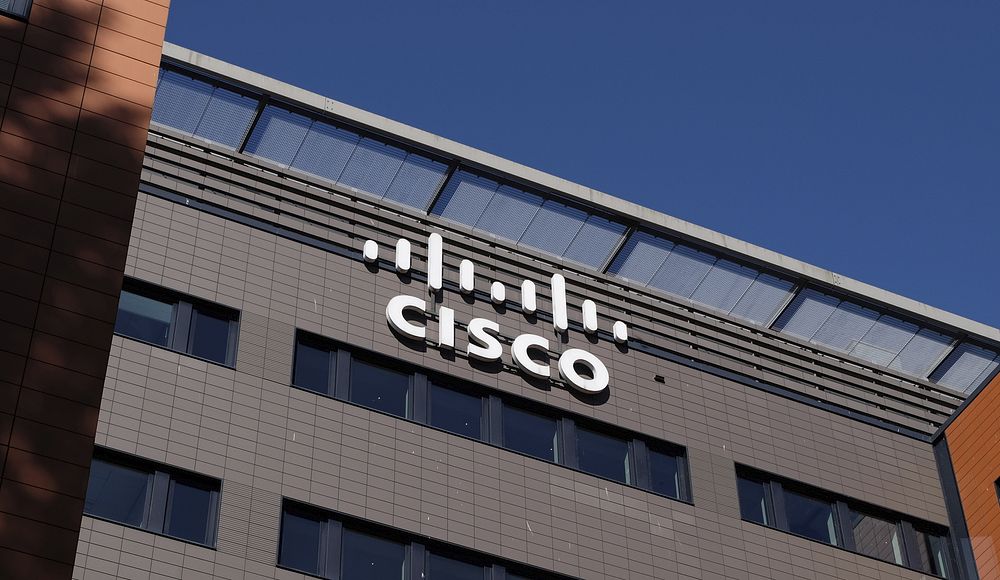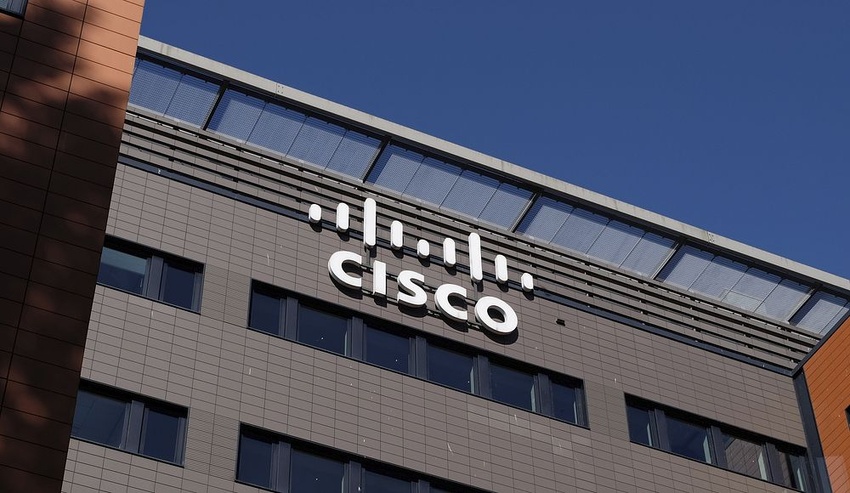Protecting Wildlife and Habitats Through Technology: A Decade of Impact by Cisco and CCF
Rhinos, elephants, gorillas, and the ecosystems they inhabit are among the many natural wonders safeguarded through a decade-long collaboration between Cisco and the Connected Conservation Foundation (CCF).
Back in 2015, rhinos in South Africa’s Sabi Sand Nature Reserve faced a dire threat. Poachers routinely breached the reserve’s perimeter under cover of darkness—not for sport or sustenance, but to harvest rhino horns, which are wrongly believed in some cultures to have medicinal properties. These horns are actually composed of keratin, the same substance found in human nails.
This crisis was fueled by limited economic opportunities in the surrounding region, soaring demand and prices on the black market, and a shortage of adequately equipped park rangers. The result was a deadly combination pushing rhinos closer to extinction.
“It was a very urgent situation,” recalled Sophie Maxwell, CEO of the Connected Conservation Foundation, which has worked with Cisco for 10 years to apply advanced digital tools to wildlife protection in Africa and beyond. “Forty-five rhinos had recently been killed in Sabi Sands. That’s when Cisco and its then-partner Dimension Data got involved to address the poaching crisis head-on.”
By deploying technologies like LoRaWAN networks, IoT sensors, thermal imaging cameras, and smart fence alert systems, poaching incidents at Sabi Sand dropped by 96% by 2019, according to CCF.
But the work didn’t stop there.
Today, CCF operates across 35 protected zones in 15 countries, including Kenya, Namibia, Papua New Guinea, and Peru. Its efforts now extend to safeguarding species such as tree kangaroos, pangolins, leopards, and Andean bears. Simultaneously, the initiative supports local communities by enhancing schools, offering tech education, and opening up job pathways.
Fran Katsoudas, Cisco’s Chief People, Policy, and Purpose Officer, reflected on the milestone. “For 10 years, we’ve believed in the power of technology to leave the world better than we found it,” she said. “From ecosystems to endangered species, we know digital innovation can create meaningful change—and we’re just getting started.”
Proactive Protection Through Innovation
The initiative traces back to Bruce “Doc” Watson, co-founder of Dimension Data, who partnered with Cisco to launch a tech-driven defense of Sabi Sand. “We treated the reserve as a technology testing ground,” said Maxwell. “We developed systems to detect threats, monitor wildlife and human activity, and issue early alerts so rangers could intercept poachers before harm was done. At the time, no such tech existed in conservation.”
Ian Robertson, Cisco’s global executive for cloud computing, has been involved from the outset. Reflecting on the journey, he said, “We began in a single South African reserve, but the scope has grown massively. Last year alone, 32 rare white rhinos were reintroduced to Sabi Sand, which recently marked 500 consecutive days without a poaching incident. And now, we’re protecting many more species beyond rhinos.”
Still, challenges remain. Many reserves continue to face poaching threats, especially where early detection tools are missing. Kenya, however, serves as a success story. Surveillance technologies now cover 8% of the country’s land, helping to eliminate poaching through smart monitoring and improved conservation strategies. Between 2012 and 2017, Kenya’s rhino population grew by 6%.
Empowering Communities for Sustainable Conservation
According to Cisco’s Rebecka Turner, who co-leads the partnership with Robertson, it’s crucial to look beyond wildlife and focus on the people too.
“CCF plays a big role in uplifting local communities,” she said. “By training local technicians and building bridges between people, wildlife, and protected lands, the tech doesn’t just preserve nature—it fosters peace and progress.”
A foundational part of this is education. Robertson emphasized, “It’s not enough to protect the reserve—we must support the surrounding communities, where poverty and limited educational access are common. Cisco’s mission to connect the unconnected inspired us to do more.”
To that end, the Cisco Networking Academy became a vital resource. With over 24 million students trained globally, it offered new skills in networking and cybersecurity to people in conservation zones. Cisco also provided digital infrastructure—Wi-Fi and access points—to environmental education centers in places like Uganda and South Africa, enabling training for roles in ecology, tourism, and protected-area management.
Adapting to Evolving Threats
As challenges such as climate change and habitat loss grow, so too must conservation strategies. In 2021, the Airbus Foundation joined forces with Cisco and CCF to provide satellite data, creating a “bird’s-eye view” of wildlife and environmental conditions. Paired with Cisco’s networks and IoT systems, this data allows for more precise monitoring of animal behavior, weather, and agricultural impacts.
This approach helps mitigate conflicts—such as when elephants damage crops—by predicting their movements and offering insights to help farmers coexist with wildlife.
Maxwell gave the example of Namibia’s elephants. “By mapping artificial water sources and tracking elephant movement, we began to understand what drives their migration. That data is key to planning peaceful cohabitation.”
As the program expands, so does the volume of data it must handle. With this in mind, CCF and Cisco are exploring newer technologies—including AI and analytics via Cisco’s acquisition of Splunk—to boost security and insight. Cybersecurity remains a top priority, given increasing threats from malicious actors.
“Cisco has been with us since day one,” Maxwell said. “Their support has made this all possible. And as we look ahead, we’re excited to keep pushing the boundaries of what’s possible in conservation technology.”
Click here to support CCF initiatives.
Rhinos, elephants, gorillas, and the ecosystems they inhabit are among the many natural wonders safeguarded through a decade-long collaboration between Cisco and the Connected Conservation Foundation (CCF).
Back in 2015, rhinos in South Africa’s Sabi Sand Nature Reserve faced a dire threat. Poachers routinely breached the reserve’s perimeter under cover of darkness—not for sport or sustenance, but to harvest rhino horns, which are wrongly believed in some cultures to have medicinal properties. These horns are actually composed of keratin, the same substance found in human nails.
This crisis was fueled by limited economic opportunities in the surrounding region, soaring demand and prices on the black market, and a shortage of adequately equipped park rangers. The result was a deadly combination pushing rhinos closer to extinction.
“It was a very urgent situation,” recalled Sophie Maxwell, CEO of the Connected Conservation Foundation, which has worked with Cisco for 10 years to apply advanced digital tools to wildlife protection in Africa and beyond. “Forty-five rhinos had recently been killed in Sabi Sands. That’s when Cisco and its then-partner Dimension Data got involved to address the poaching crisis head-on.”
By deploying technologies like LoRaWAN networks, IoT sensors, thermal imaging cameras, and smart fence alert systems, poaching incidents at Sabi Sand dropped by 96% by 2019, according to CCF.
But the work didn’t stop there.
Today, CCF operates across 35 protected zones in 15 countries, including Kenya, Namibia, Papua New Guinea, and Peru. Its efforts now extend to safeguarding species such as tree kangaroos, pangolins, leopards, and Andean bears. Simultaneously, the initiative supports local communities by enhancing schools, offering tech education, and opening up job pathways.
Fran Katsoudas, Cisco’s Chief People, Policy, and Purpose Officer, reflected on the milestone. “For 10 years, we’ve believed in the power of technology to leave the world better than we found it,” she said. “From ecosystems to endangered species, we know digital innovation can create meaningful change—and we’re just getting started.”
Proactive Protection Through Innovation
The initiative traces back to Bruce “Doc” Watson, co-founder of Dimension Data, who partnered with Cisco to launch a tech-driven defense of Sabi Sand. “We treated the reserve as a technology testing ground,” said Maxwell. “We developed systems to detect threats, monitor wildlife and human activity, and issue early alerts so rangers could intercept poachers before harm was done. At the time, no such tech existed in conservation.”
Ian Robertson, Cisco’s global executive for cloud computing, has been involved from the outset. Reflecting on the journey, he said, “We began in a single South African reserve, but the scope has grown massively. Last year alone, 32 rare white rhinos were reintroduced to Sabi Sand, which recently marked 500 consecutive days without a poaching incident. And now, we’re protecting many more species beyond rhinos.”
Still, challenges remain. Many reserves continue to face poaching threats, especially where early detection tools are missing. Kenya, however, serves as a success story. Surveillance technologies now cover 8% of the country’s land, helping to eliminate poaching through smart monitoring and improved conservation strategies. Between 2012 and 2017, Kenya’s rhino population grew by 6%.
Empowering Communities for Sustainable Conservation
According to Cisco’s Rebecka Turner, who co-leads the partnership with Robertson, it’s crucial to look beyond wildlife and focus on the people too.
“CCF plays a big role in uplifting local communities,” she said. “By training local technicians and building bridges between people, wildlife, and protected lands, the tech doesn’t just preserve nature—it fosters peace and progress.”
A foundational part of this is education. Robertson emphasized, “It’s not enough to protect the reserve—we must support the surrounding communities, where poverty and limited educational access are common. Cisco’s mission to connect the unconnected inspired us to do more.”
To that end, the Cisco Networking Academy became a vital resource. With over 24 million students trained globally, it offered new skills in networking and cybersecurity to people in conservation zones. Cisco also provided digital infrastructure—Wi-Fi and access points—to environmental education centers in places like Uganda and South Africa, enabling training for roles in ecology, tourism, and protected-area management.
Adapting to Evolving Threats
As challenges such as climate change and habitat loss grow, so too must conservation strategies. In 2021, the Airbus Foundation joined forces with Cisco and CCF to provide satellite data, creating a “bird’s-eye view” of wildlife and environmental conditions. Paired with Cisco’s networks and IoT systems, this data allows for more precise monitoring of animal behavior, weather, and agricultural impacts.
This approach helps mitigate conflicts—such as when elephants damage crops—by predicting their movements and offering insights to help farmers coexist with wildlife.
Maxwell gave the example of Namibia’s elephants. “By mapping artificial water sources and tracking elephant movement, we began to understand what drives their migration. That data is key to planning peaceful cohabitation.”
As the program expands, so does the volume of data it must handle. With this in mind, CCF and Cisco are exploring newer technologies—including AI and analytics via Cisco’s acquisition of Splunk—to boost security and insight. Cybersecurity remains a top priority, given increasing threats from malicious actors.
“Cisco has been with us since day one,” Maxwell said. “Their support has made this all possible. And as we look ahead, we’re excited to keep pushing the boundaries of what’s possible in conservation technology.”
Click here to support CCF initiatives.


 How Cisco and CCF Use Technology to Protect Endangered Wildlife
How Cisco and CCF Use Technology to Protect Endangered Wildlife





 Companies
Companies